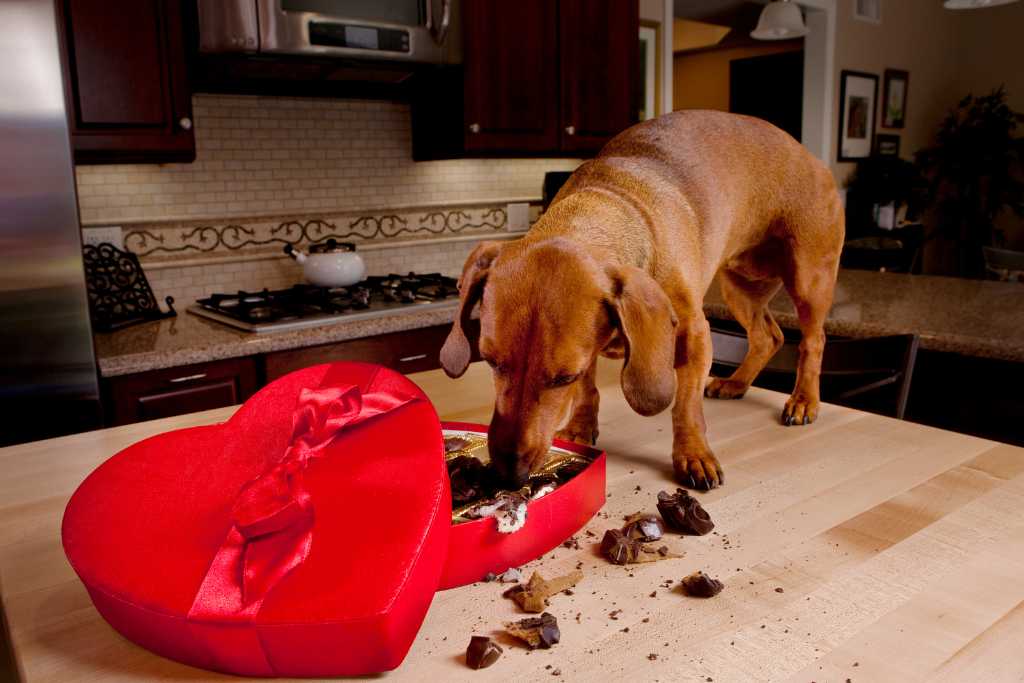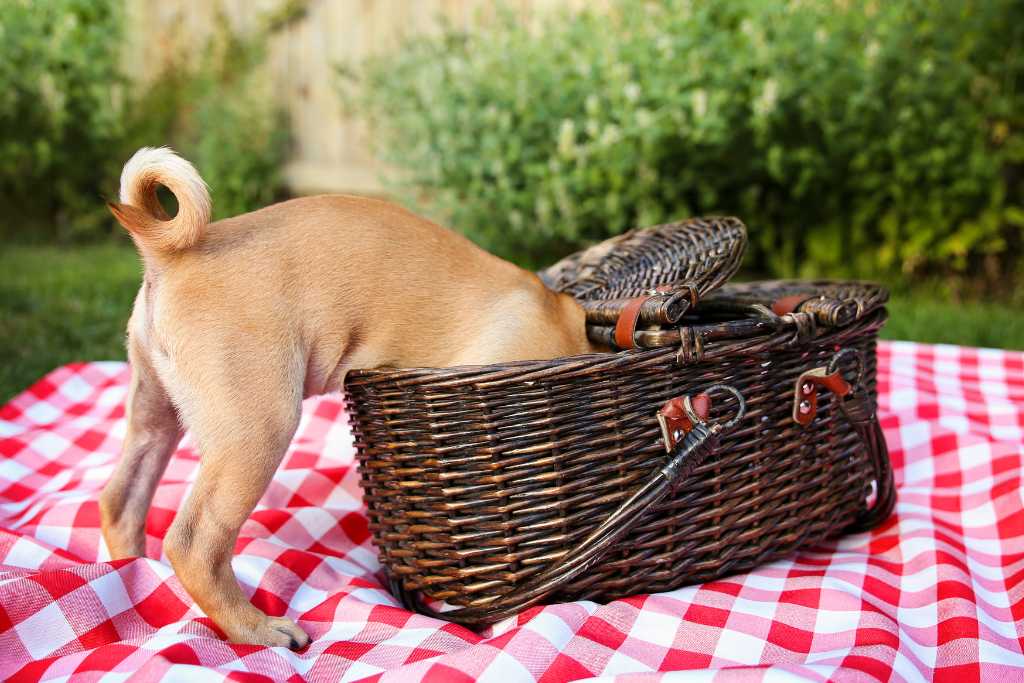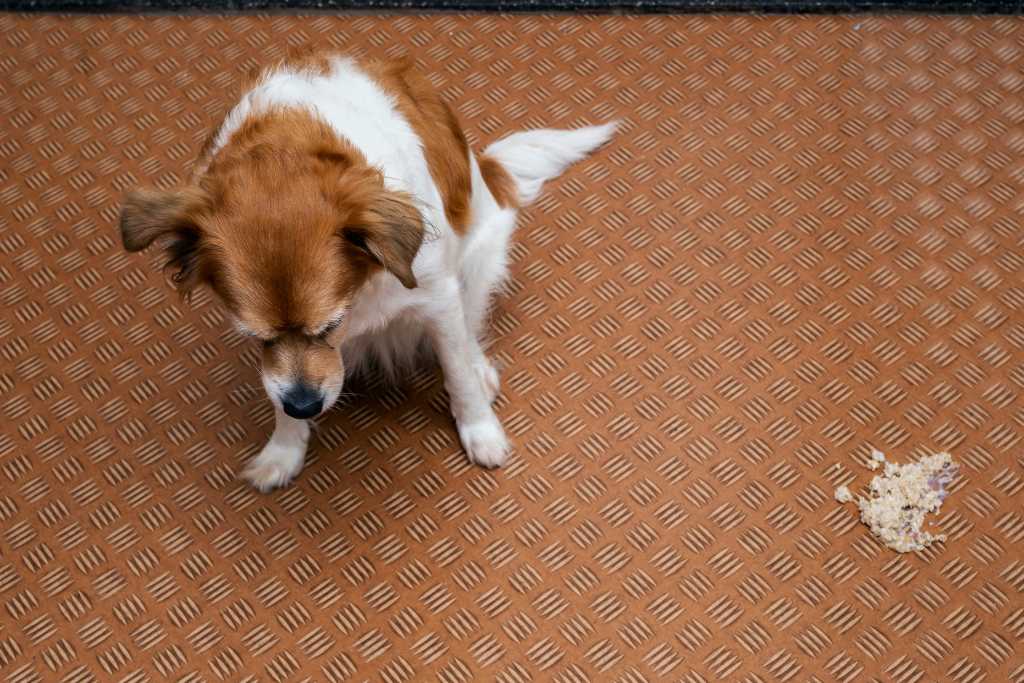MORE TO SHIP FREE 🚚
NICE. SHIPPING IS FREE 🎉
MORE TO REDEEM GIFT 🎁
YAY. REDEEM A FREE GIFT 🥳
YOUR CART IS EMPTY. SHOP NOW.
The sight of a dog indulging in a piece of chocolate can be a cause for concern among pet owners. Chocolate contains theobromine and caffeine, both of which are stimulants that can be toxic to dogs. The severity of the toxicity depends on the type and amount of chocolate consumed. In this comprehensive guide, we will explore the potential risks associated with dogs ingesting chocolate and outline the steps to take when faced with such a situation.

Chocolate is toxic to dogs due to the presence of substances called theobromine and caffeine. Both theobromine and caffeine belong to a class of chemicals known as methylxanthines. While humans can metabolise these substances relatively quickly, dogs metabolise them much more slowly, leading to an accumulation of these compounds in their system.
Theobromine, in particular, is the primary culprit behind chocolate toxicity in dogs. It stimulates the central nervous system and cardiovascular system, leading to various symptoms ranging from mild to severe, depending on the amount of chocolate ingested and the size of the dog. Dark chocolate and cocoa powder contain higher concentrations of theobromine compared to milk chocolate or white chocolate, making them more toxic to dogs. Knowing how much and what kind of chocolate your dog ate can help you and your vet determine if you have an emergency. You can calculate your dog’s risk of toxicity with this chocolate toxicity calculator.
Understanding the toxic dose of theobromine is crucial for dog owners to gauge the potential risks associated with chocolate ingestion. The toxic threshold begins at 9 milligrams (mg) of theobromine per pound of the dog's body weight, causing mild signs of toxicity. However, when the theobromine intake reaches 18 mg per pound of the dog's body weight, severe toxicity can occur.
Dark chocolate poses a higher risk due to its elevated theobromine content, with the severity increasing with the darkness of the chocolate. Baker's chocolate, known for its richness, is the most toxic to dogs, containing up to 450 mg of theobromine per ounce. While it is fortunate that Baker's chocolate is generally less palatable to dogs, some may still attempt to consume it. On the other hand, an 85% dark chocolate contains about 230 mg of theobromine per ounce, making it a significant concern as well. In contrast, milk chocolate has a lower theobromine content, not exceeding 60 mg per ounce, and chocolate baked goods contain even less. For dog owners, calculating the potential danger based on theobromine content is relatively straightforward. However, in an emergency when a quick response is necessary, use this chocolate toxicity calculator to gauge the amount of chocolate consumed.

The signs of chocolate poisoning in dogs typically manifest within six to 12 hours after ingestion. It's essential for dog owners to be vigilant during this timeframe and recognise potential symptoms, as prompt intervention can be crucial.
Common signs of chocolate poisoning in dogs include restlessness, increased heart rate, vomiting, diarrhoea, tremors, and elevated body temperature. In more severe cases, dogs may experience seizures or even cardiac arrest. These symptoms can vary in intensity depending on the type and amount of chocolate ingested, as well as the size and sensitivity of the dog.
It's noteworthy that older dogs and those with pre-existing heart conditions are particularly at risk of sudden death resulting from chocolate poisoning. The combination of theobromine's effects on the cardiovascular system and the potential complications associated with age or existing heart issues can heighten the severity of the poisoning. Given the serious nature of chocolate toxicity, if a dog is suspected of ingesting chocolate, immediate veterinary attention is paramount. The veterinarian can assess the severity of the situation, provide appropriate treatment, and take measures to mitigate the potential risks associated with chocolate poisoning. Dog owners should remain vigilant and seek professional help promptly if they observe any concerning signs in their pets after chocolate ingestion.
Contact Your Veterinarian
If you catch your dog in the act of consuming chocolate or if you notice any symptoms of theobromine toxicity, contact your veterinarian immediately. Provide information about the type and quantity of chocolate ingested, as well as your dog's weight.
Induce Vomiting (Under Veterinary Guidance)
In some cases, inducing vomiting may be recommended, especially if the ingestion occurred within the past two hours. However, this should only be done under the guidance of a veterinarian, as it may not be suitable for all situations or may even be contraindicated in certain cases.
Activated Charcoal Administration
Your veterinarian may suggest administering activated charcoal to help prevent further absorption of theobromine in the dog's system. This is often recommended if the ingestion occurred within a specific time frame.
Visit the Veterinarian for Evaluation
Take your dog to the veterinarian for a thorough evaluation. The vet may conduct blood tests to assess the level of theobromine in the dog's system and provide appropriate treatment based on the severity of the situation.

Keep Chocolate Out of Reach
Prevention is the best approach. Keep all forms of chocolate, including baking ingredients and cocoa products, out of your dog's reach. Ensure that chocolate is stored in secure containers or cabinets.
Educate Family and Guests
Educate family members and guests about the dangers of feeding chocolate to dogs. Some well-meaning individuals may not be aware of the potential harm, and it's essential to communicate the risks. Remind your children and guests that chocolate should be kept out of the dog’s reach and not left out for dogs on countertops, tables, or in purses where they are within easy reach.
Teach Them to Leave It
The command “leave it” is extremely effective in preventing dogs from eating something that falls onto the ground or is left within reach during a walk.
Offer Dog-Friendly Treats
Dogs can taste “sweetness” and some are attracted to sweet treats more than others. Chocolate often contains ingredients like sugar, fats, and sometimes even additional flavourings that can make it appealing to dogs. Offer your dog safe and dog-friendly treats. There are many pet-friendly options available that mimic the flavours and textures dogs enjoy without the associated risks. Below are a few for your consideration.
Feed in moderation! While treats are a delightful way to show affection and reinforce positive behaviour, it's crucial to practise moderation. Maintaining a healthy and happy canine companion involves mindful treat-giving. Overindulging in treats can lead to health issues such as obesity. Treats should be used thoughtfully, adding a touch of joy without compromising their health. Remember, a healthy diet, combined with moderate treat-giving, contributes to a vibrant and contented life for your furry friend.

Understanding the type and amount of chocolate consumed by a dog is crucial in determining the potential risks and necessary interventions. White chocolate poses the least risk, while dark chocolate and cocoa products carry a higher risk of theobromine toxicity. Recognising the symptoms and taking immediate action, including contacting a veterinarian, can be life-saving.
In matters concerning dogs and chocolate, adopting a "better safe than sorry" approach is advisable for pet parents. Even a nibble can pose risks, so preventive measures are crucial. Keeping chocolate out of a dog's reach and educating those in the household and surroundings are fundamental steps in ensuring the safety of our canine companions. If chocolate is a staple in your home, exercise caution by storing it securely. A bowl of chocolate candies left unattended can be an irresistible temptation for a curious dog, and preventing access is a simple yet effective way to protect your furry friend from unnecessary risks.

Comments will be approved before showing up.
Dogs can eat raw food, but random meat pieces aren’t balanced. Learn the challenges of DIY raw feeding and why...
Dogs don’t need much to be happy. The best gift? You! Spending time together, doing all their favourite things, is...
A comprehensive guide to help your dog stay calm and well-behaved during festive gatherings with simple prep tips to reduce...



